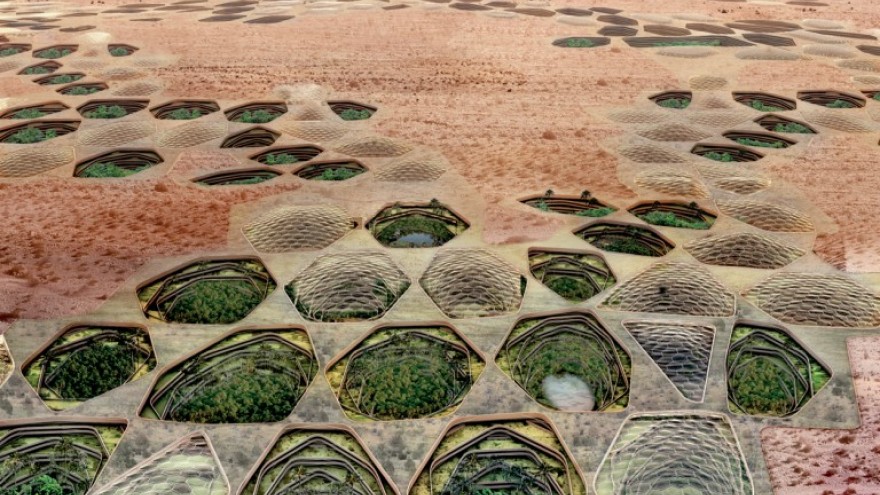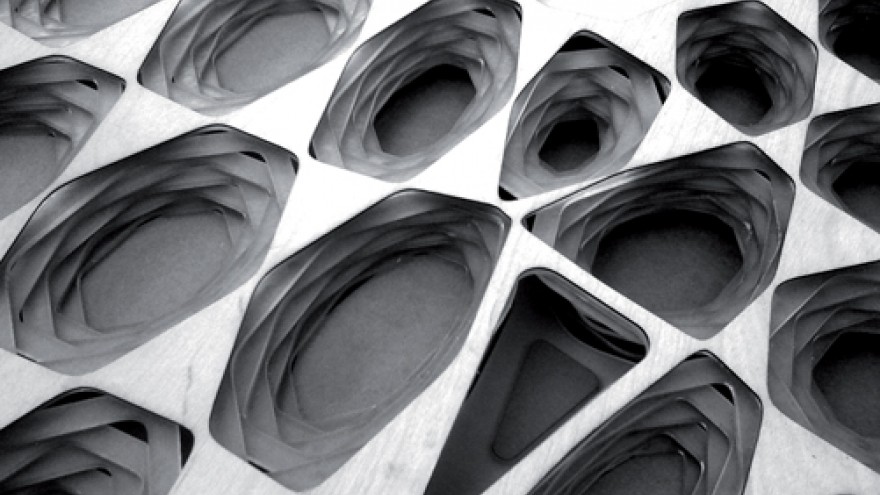From the Series
Frank Herbert’s famous 1965 novel Dune describes a planet that has undergone nearly complete desertification. The few remaining inhabitants have secluded themselves from their harsh environment in what could be called subterranean oasises. Far from idyllic, these havens, known as “sietch”, are essentially underground water storage banks. The concept of a water-poor world is quickly becoming a reality, especially in the American Southwest where the powerful Colorado has been desiccated by heavy agricultural use and global warming. Towns are already beginning to create underground water-banks for use in emergency drought conditions.
Sietch Nevada, by Matsys design studio, projects water-banking as the fundamental factor in future urban infrastructure in the American Southwest. Sietch Nevada is an urban prototype that makes the storage, use and collection of water essential to the form and performance of urban life.
A network of storage canals is covered with undulating residential and commercial structures. These canals connect the city with vast aquifers deep underground and provide transportation as well as agricultural irrigation. The caverns brim with dense, urban life – an underground Venice. Cellular in form, these structures constitute a new neighbourhood typology that mediates between the subterranean urban network and the surface level activities of water harvesting, energy generation, and urban agriculture and aquaculture. It is also a bunker-like fortress preparing for the inevitable wars over water in the region.









